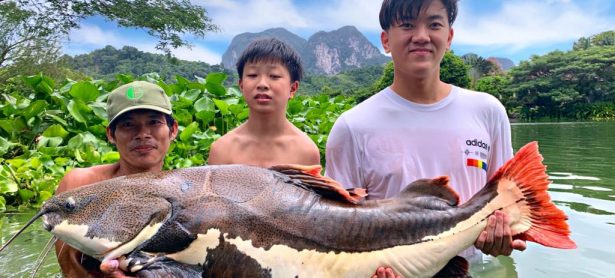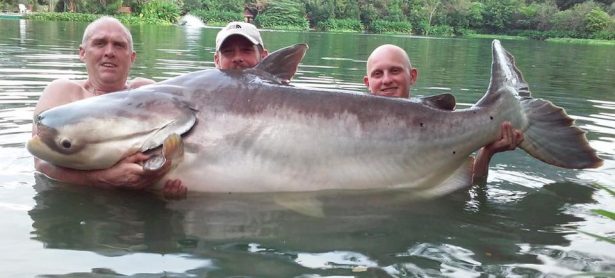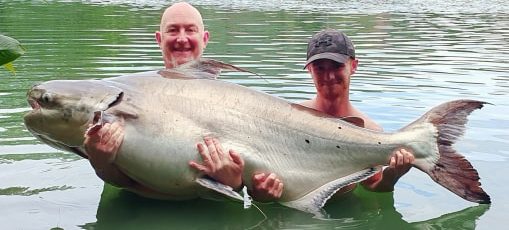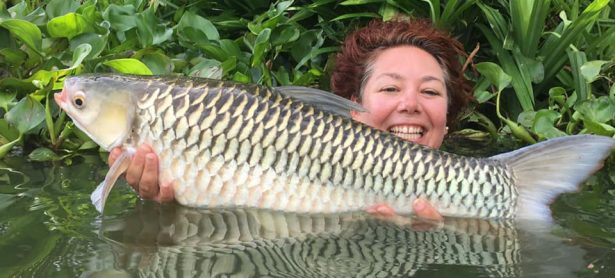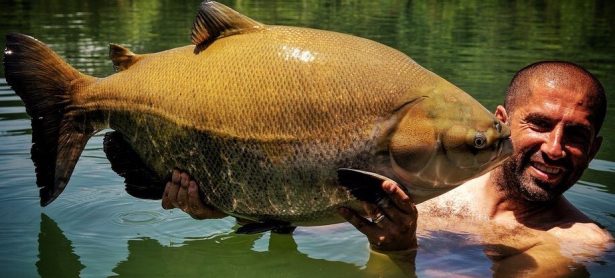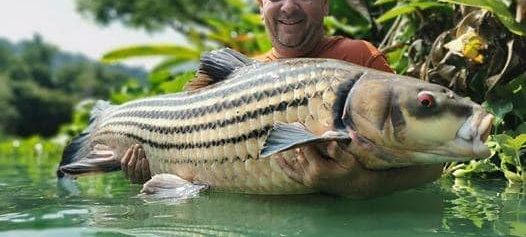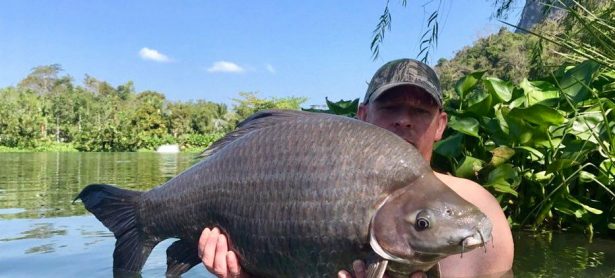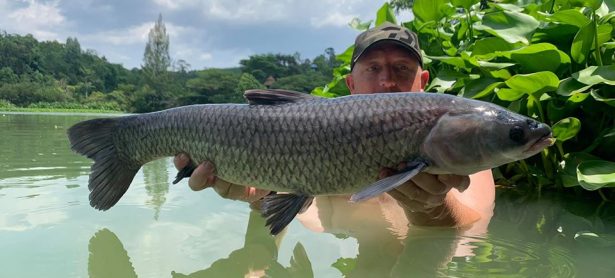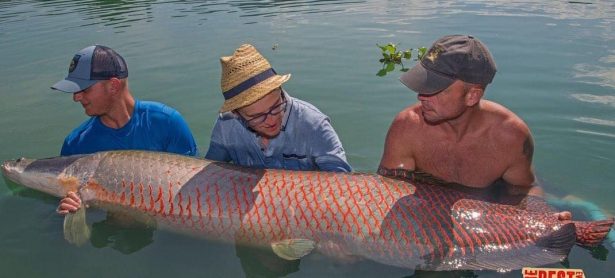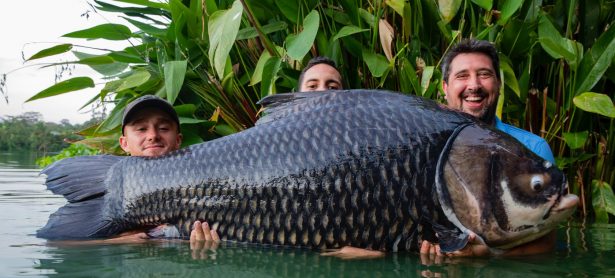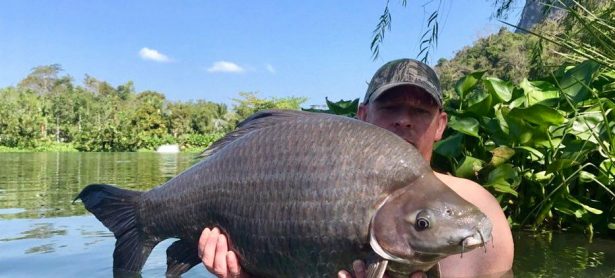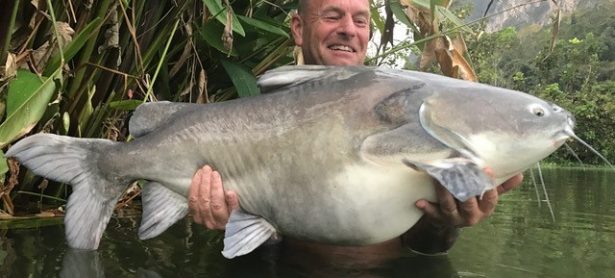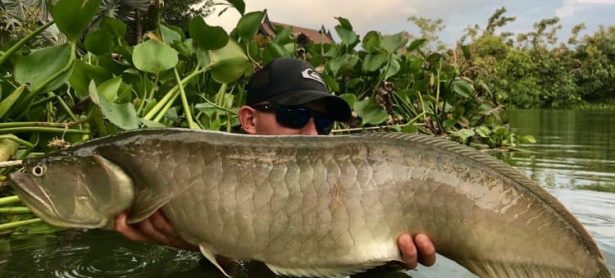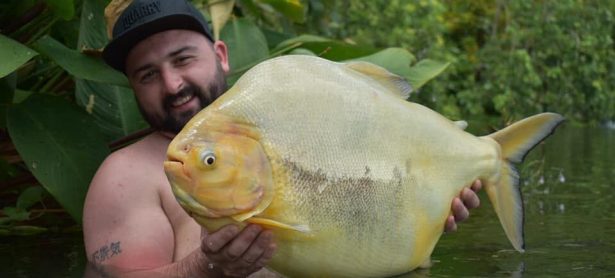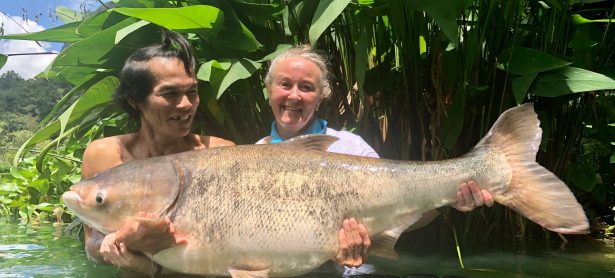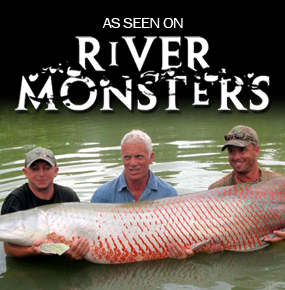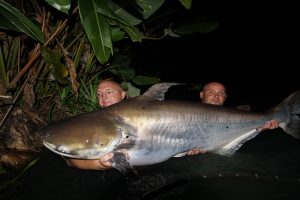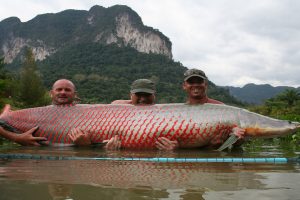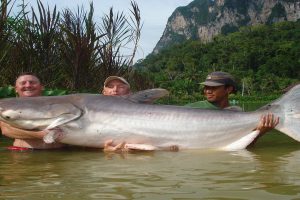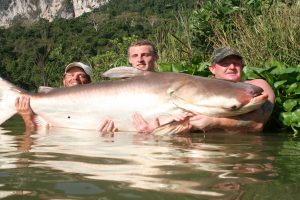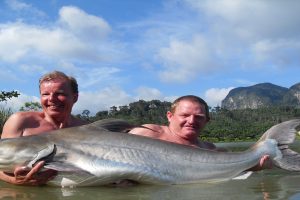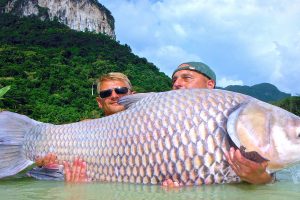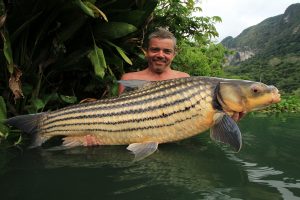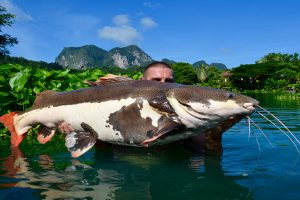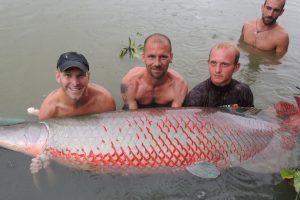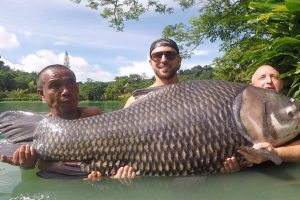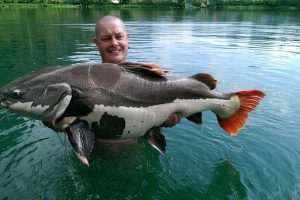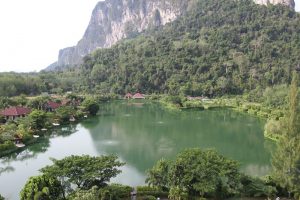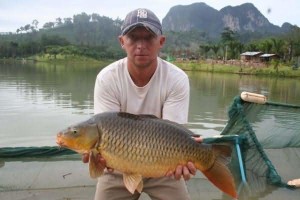 Name: Common carp.
Name: Common carp.
Species: Cyprinus carpio.
Thai name: Pla nai.
Max length: 1.5m.
Max weight: 40kg (90lb).
IGFA record: 34.35kg (75lb 11oz).
Diet: Shrimp, maize, worms, and boilies. Sometimes fry feeders.
To fish for our common carp it is the same as in Europe. We recommend you use maize or boilies with a small pop-up above to present a snowman style bait. Fish in conjunction with a Richworth feeder with method mix. You will pick up all our carp species using this method. Alternatively feed with floating pellets and fish a floating bait in with the free offerings. Using this exiting method you will also take all the other carp species. Imagine the heart rate when a 50kg-plus Siamese carp engulfs your intended common carp bait. When bottom fishing the takes are normally out of the blue one-toners. The fight is long hard runs, but once netted there are no special requirements, and nothing on the fish to hurt you. Carp are very resilient fish so just get in the water, take your pictures and release. Here at Gillhams we are interested to see what these fish will do. Our common carp came to Thailand with a koi carp shipment from Israel as brown koi, and when no one wanted them our agent bought them for us. Talking to friends at home who supply carp, they feel these carp will do one of two things: either grow big in our environment or spawn too much. It would be nice to think they will grow big, as the IGFA record is a bit outdated. The biggest common to date is a German fish of 38.45kg (84lb 12oz) caught in 2008. The biggest mirror to date is a French fish of 40kg (88lb 6oz) caught in 2008. In our home country the British record now stands at an impressive 30kg (67lb) caught in May 2008. So time will tell if we will produce a monster, or create loads of arapaima food!
General facts on the common carp:
The common carp is a member of the family cyprinidae. Carp in Asia originated from China and Japan. In Europe carp originated in the River Danube, and were introduced to Britain by the Romans as a source of food. The common carp is related to the common goldfish with which it is capable of interbreeding. The carp has been introduced into environments worldwide, and is often considered an invasive species. An egg-layer, a typical adult fish can lay 300,000 eggs in a single spawning. Research shows that carp can spawn multiple times in a season. Common carp have been introduced, often illegally, into many countries. Due to their habit of grubbing through bottom sediments for food and alteration of their environment, they may destroy, uproot and disturb submerged vegetation causing serious damage to native duck and fish populations. The common carp is the third most important farmed freshwater fish species in the world. Eastern European carp gene banks have provided the selective improvement of carp for intensive and semi-intensive pond culture in Europe and beyond. Several serious disease problems threaten carp farming in many countries, and urgent steps need to be taken to alleviate these risks by identifying strains of koi herpes virus (KHV). They are hardy fish and can tolerate a wide range of conditions, however, they do best in large bodies of slow flowing or still fresh water with soft, muddy sediments. Carp are omnivorous; they feed on aquatic crustaceans, insects, worms, aquatic plants, algae and seeds. They grub around in the sediment and strain food from the mud, which can cause problems because this action uproots submerged vegetation and increases the cloudiness of the water. This can have negative effects on native wildlife. In Victoria, Australia, common carp has been declared as a noxious fish species, therefore there is no restriction on the quantity that a fisher can take. In South Australia, it is an offence for this species to be released back to the wild. Common carp are extremely popular with anglers in many parts of Europe, reaching cult proportions. Their popularity as quarry is slowly increasing among anglers in the United States. Specialized baits and tackle have been developed for common carp angling, which include specialized boiled baits, otherwise known as boilies, and a complete industry has evolved around carp angling in Europe. Carp is also eaten in many parts of the world both when caught from the wild and raised in aquaculture. In Germany, Austria, the Czech Republic, Slovakia, Croatia and Poland, a carp is a traditional part of a Christmas Eve dinner. Variants include the mirror carp, with large mirror-like scales, the linear mirror, scaleless except for a row of large scales that run along the lateral line, originating in Germany, and the leather carp, virtually unscaled except near the dorsal fin, and the fully scaled carp.



